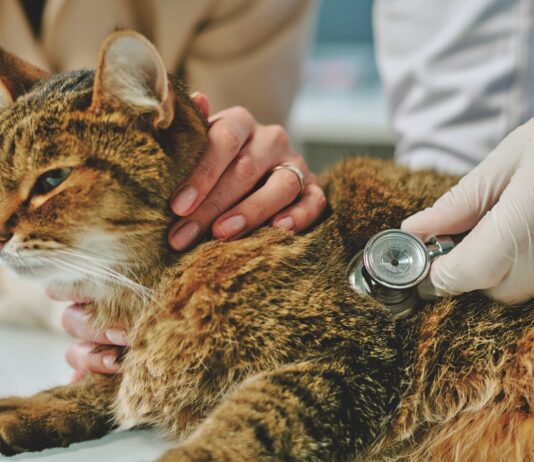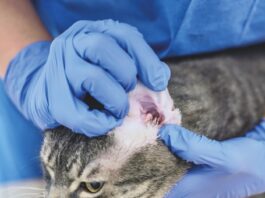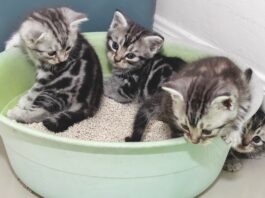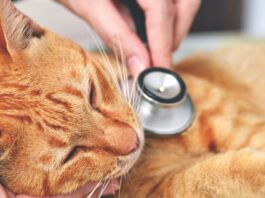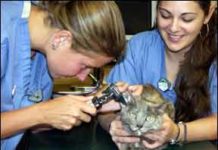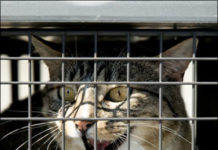Providing Good Cat Care on a Budget
With the economy struggling, its comforting to know that are plenty of ways to defray the cost of owning a cat without compromising your pets well-being. In fact, some of the most effective strategies can actually benefit your cat. According to Jodi Korich, DVM, former director of Partners in Animal Health at Cornell Universitys College of Veterinary Medicine, "One of the best ways to save money on your pets health is to pay attention to early disease detection and preventive health care." Just like oil changes and preventive maintenance result in fewer repair bills for your car, she says, regular check-ups and early intervention will save you money in the long-run.
Short Takes: April 2011
Researchers studied the effect of distance and neighborhood-level demographics on the number of pet adoptions from an animal shelter ("Use of geospatial neighborhood control locations for epidemiological analysis of community-level pet adoption patterns," American Journal of Veterinary Research, 2010). The methods used to perform the study included client segmentation, geospatial tools, and epidemiological techniques that evaluated locations of 1,563 adoptions from an animal shelter in eastern Massachusetts.
Why Theres a Decline in Veterinary Visits
Cat and dog veterinary visits have been declining over the past several years, and a new study might explain why. According to the Bayer Veterinary Care Usage Study, the reasons include: the economic impact of the recession, fragmentation of veterinary services, consumers substituting Internet research for office visits, cat resistance to vet visits, perception among pet owners that regular medical check-ups are unnecessary and the cost of care.
Diagnosis: Otitis Externa
Among all acquired feline ear disorders, the most common by far is otitis externa, an infection of the outer ear canal that, if untreated, can progress to the inner ear, damage the ear drum and seriously compromise an animals hearing as well as its sense of balance. The most common cause of this unpleasant condition and its potentially deafening consequences is an assault on the ear by an outside invader, the ear mite. In some cases, however, the culprit is an organism that normally resides harmlessly within a cats ear a one-celled fungus, or yeast, known as Malessezia.
Abscesses: Potentially Serious Infection
For several days, your cat has been acting oddly, lolling about the house, uncharacteristically lethargic, off his food and seemingly depressed. Then one evening, while stroking his back to comfort the mysteriously dispirited animal, you notice a smallish but alarming lump just to the side of his tail. Although you touch the lump ever so gently, he reacts with a howl, hisses, leaps from your lap and scurries to a dark corner. The lump you discovered is quite possibly an abscess, and although your touching it caused the poor animal intolerable discomfort, its a good thing that you spotted it.
Tackling Cat Hair and Pet Odor
The best strategy to minimize a pet hair problem in your home is to remove loose hair from your cats coat before it hits the floor. And ironically, shorthaired cats often shed more than longhaired cats. Of course, you cant possibly catch all pet hair before it falls out. So when it does make its inevitable landfall, the following are ways to pick up pet hair as easily and thoroughly as possible. Tackling Upholstery.Vacuuming is the first approach to removing cat hair from upholstery; however, if your vacuum isnt removing enough hair, you can try one of several other approaches.
Short Takes: March 2011
Cornell University Veterinary Specialists (CUVS) welcomed its first patients in January, 2011. The satellite referral and 24-hour emergency care hospital located at 880 Canal Street in Stamford, CT, leverages the resources of the nations leading veterinary college, Cornell Universitys College of Veterinary Medicine, with those that the best of specialty private practice can offer for the benefit of pets, owners and the veterinary profession.
Short Takes: February 2011
Multiple endocrine glandular failure is recognized in humans, yet it is an uncommonly recognized phenomenon in veterinary medicine. This retrospective study ("Multiple endocrine diseases in cats: 15 cases [1997-2008]," Journal of Feline Medicine & Surgery, 2010) included a population of cats from a university veterinary teaching hospital diagnosed with multiple endocrine disorders.
Emergency Care for Your Cat
Perhaps the most important characteristic of a responsible cat owner is the ability to distinguish the signs of minor feline illnesses from those calling for an immediate trip to the nearest animal emergency care facility. Cat owners should be equipped ahead of time to deal promptly with such a crisis. They should know precisely where the clinic is located, the speediest route to get there, how to transport the afflicted animal, what documents they should take to the facility - and what to expect to happen upon arrival.
High Blood Pressure and Your Cat
As cats reach the age of eight or nine (the rough equivalent of 40 or 50 in a human), they may begin to show signs of age-related physical disorders that may or may not increase in severity as the animals continue their transition into old age. Some feline geriatric conditions, of course, may ultimately prove fatal. Others, however, may be amenable to medical therapy that can extend the life of an elderly cat for several years. Hypertension (abnormally high blood pressure) is one of the latter disorders. If untreated, it can lead to blindness and possible damage to the heart, kidneys and brain.
Antifreeze Dangers: Deadly Serious
As you cope with the frigid temperatures that come with winter, you may make it a habit of adding antifreeze to the radiator of your automobile. This substance-a bright green, syrupy chemical called ethylene glycol-serves to lower the freezing point of water and will certainly help to keep your car running smoothly throughout the colder months. Keep in mind, however, that ethylene glycol, if ingested by your cat, can prove deadly within a matter of days if the animal does not undergo prompt and expert veterinary treatment to get it out of its system.
Short Takes: January 2011
Diabetes mellitus (DM) is one of the most common endocrine diseases found in cats, and insulin therapy has become the most effective means to achieve blood glucose control. Clinical remission is not an uncommon finding in cats with well-controlled diabetes, though few studies have explored predictors of remission. In this study ("Predictors of clinical remission in cats with diabetes mellitus," Journal of Veterinary Internal Medicine, 2010), data was retrieved from the medical records of 90 cats with newly-diagnosed diabetes. The data collected included history, signalment, physical examination findings, hematology, biochemical profile and the occurrence and duration of remission. Remission was defined as normoglycemia without insulin longer than four consecutive weeks.

